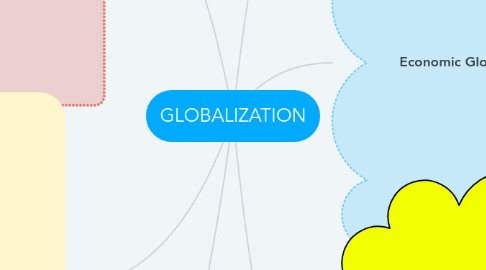
1. Challenges for a shrinking planet
1.1. “global village” description
1.2. Encouragement of economic globalization -> local specification & eating habit
1.2.1. single global purchasing culture
1.2.2. development of buying habits
1.2.3. some new products
1.3. The different advertising approachs
1.3.1. multiple buying patterns
1.3.2. diversity in shades, habits and opinions
1.4. Sharing the same view of world
1.4.1. new links between people
1.4.2. global industries: sport, fashion, entertainment
1.4.3. political cooperation
1.5. Economic management
1.5.1. the Asian financial crisis
1.5.2. the financial world
1.6. Facing some problems
1.6.1. global financial system
1.6.2. supranational institutions
1.6.3. effective police force
2. Community & conflict
2.1. No inherent conflict: a good global citizen vs a proud member of a particular regional
2.2. Ethnic divisions: not vanished but diminished
2.3. The trend of multi-cultural society: accelerated
2.4. Change in the transition to patterns of employment: supporting devices
2.5. The labor force: immigrants
2.6. More prone to conflict
2.7. Computer-mediated communication: enhance democracy
2.8. Problem - how to enforce national law in the global village
2.9. Cultural diversity: glories of human civilization
3. Sharing of sovereignty
3.1. The United Nations: unable to tackle the world’s most intractable issues
3.2. Nation: reach an agreement on a joint basis
3.3. The UN: minimal impacts on resolving serious political conflicts
3.4. EU - typical example of shared sovereignty
4. The Shrinking planet
4.1. Life of people in the past:
4.1.1. Very few communicative devices
4.1.2. World = human immediate surroundings
4.2. The change in people’s life
4.2.1. Great changes of the world in 2020
4.2.1.1. explosive population
4.2.1.2. cultural expansion by technology, tourism and internet development
4.2.1.3. industries
4.2.1.4. popular daily habits
4.2.2. Universal links
4.2.2.1. sharing the similarities and differences
5. Economic Globalization
5.1. The global marketplace
5.1.1. corporate household names
5.1.2. size of foreign investment and the globalization
5.1.3. International free trade
5.1.4. factors that may delay the process of globalization
5.1.5. developed world continues
5.1.6. concentration of economic power
5.1.7. difference between people
5.1.8. Economic power
6. Converging OR Diverging?
6.1. Reason
6.1.1. achieve economic success
6.1.2. rise living standards, life expectancy and educational norm
6.2. Creating convergence
6.2.1. India: change from self-sufficiency to more integration
6.2.2. North Korea: severe food shortages and economic decline
6.3. Making diverging
6.3.1. Tourism: hindrance in culture retention
6.3.2. ‘Fast food’ commercialization
6.3.3. Overload tourists
6.3.4. Global Broadcasting
6.3.5. The excluded society
6.4. The excluded society
6.4.1. Poverty and ignorance rule
6.4.2. Power over information and invention
6.4.3. better education, more 'opportunity and stronger democracy
6.5. Cultural invasion
6.5.1. Television and branded products
6.5.2. Networked computers
6.5.3. digital television
